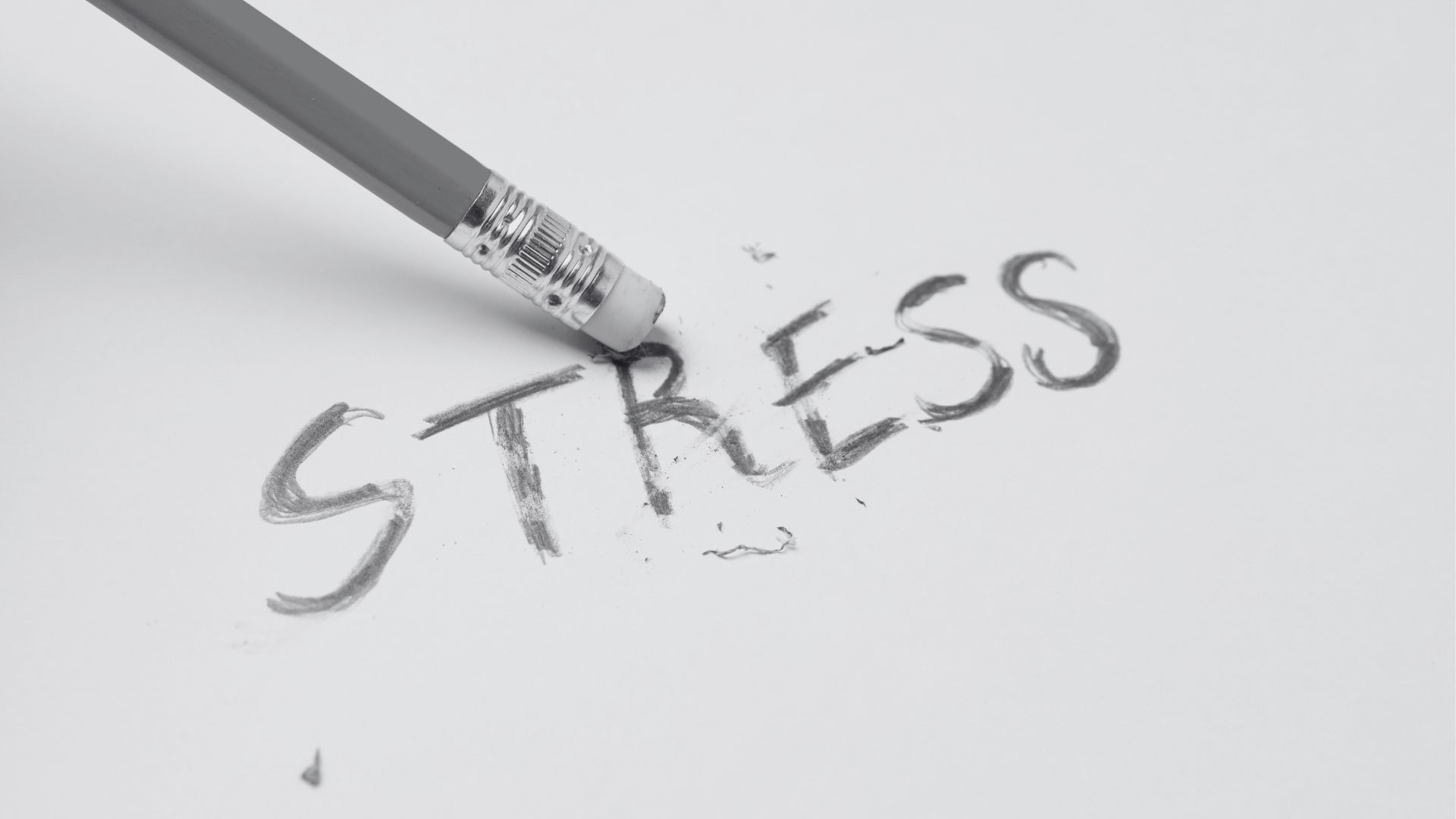I resisted their irritating advice.
Every time a doctor told me to ‘reduce my stress,’ I rolled my eyes.
After each appointment I felt more stressed because I failed to fix my stress.
Ironic, isn’t it?
At the time I didn’t understand there was critical context missing from the way society teaches us to define stress. The vague definition of stress is the reason the popular recommendation to ‘reduce your stress’ was doomed to fail – and it will be for you unless you learn this concept, too.
The ambiguous chore of lowering stress felt daunting, complex, and never ending. It was an activity on my to-do list, but there was no obvious checkmark-worthy moment in sight when I could finally celebrate its completion.
Stress was ensnarled into every aspect of my days.
Sometimes it felt awful, but other times I secretly liked the rush of being stressed. It felt exciting and inspiring as I focused on important client projects, or as I swallowed my nerves and stepped on stage to deliver a keynote.
I struggled to resolve the conflict between positive and negative attributes of stress. Deep down, I wondered if I reduced my stress, would I lose my edge?
Doctors didn’t distinguish between good and bad stress when they told me to reduce it. They just tangled it all up and threw stress into one imaginary big bucket of bad stress as if to say, ‘Here, go lighten this.’
For me, the stress bucket was too heavy; I didn’t know where to start.
The truth is, lowering my overall stress was the wrong goal. The better, more nuanced solution is to increase the good, empowering stress, and lower the bad, destructive stress that triggers anxiety, makes you feel overwhelmed, and has negative consequences on your well-being.
To achieve this, you’ll need to look beyond stress as being either good or bad and add a third category to better define stress.
Table of Contents
The Missing Distinction to Better Define Stress
If you love self-development, then grouping stress as good or bad may not be new to you. If you’re a researcher, then you know there are many options to classify and define stress. I once found a list filled with medical jargon detailing over a dozen types; it jumbled my mind.
Having too many fancy categories, or only two basic ones – good and bad – does not provide a practical simple plan when you’re trying to stop spinning in a downward spiral of destructive stress.
For most people stress has no distinction.
That’s a problem because stress is a complex messaging system with vital information for your survival, success, and happiness. Without context, it’s hard to decipher each message so you can choose the right tool to effectively deal with your stress sensations.
To make sense of this tightly-tangled mess, it starts by better defining what type of stress you’re dealing with. My Stress Design Model promotes three distinct categories – destructive stress, empowering stress, and survival stress.
Essentially, all you have to do is take the big, entangled mess of stress and split it into three smaller, more manageable buckets.
Survival Stress
When I first learned about stress as a kid, my perception of it was positive.
I vividly remember a teacher explaining the way stress hormones surge throughout our bodies when we’re in danger. I was comforted by the thought, ‘Danger = Stress = Run. Got it. If a tiger chases me, stress has got my back.’
As a very young girl, I had no world-view to realize tigers weren’t a legitimate threat roaming in the wild across North America, but as I became older and wiser, I recognized the survival instinct at different times in my life.
I felt survival stress as my brother and I drove behind a racing ambulance. In it, my mom was comforting my dad who had been diagnosed with four brain tumours after having a seizure. It felt overwhelming in a way I imagine it would if I was face-to-face with a tiger.
I felt the same crushing survival instinct when my mom fell backwards down ten concrete steps hitting her head on the sidewalk below. My heart was pounding so hard I could hear it in my ears – a tiger may as well have been in my den with me when I got the call.
While neither experience felt good, survival stress was doing its job – signalling danger. This is a powerful instinct buried deep within us.
When you, someone you love, or someone in your sphere face a real threat, survival stress can’t be ignored. Imagine the surge of intensity you’d feel if you or a family member were to receive a life-threatening diagnosis, become a victim of a crime, or if your house were to be destroyed in a natural disaster.
It would be intense, right?
The surging stress sensations are unmistakable. They deliver an important message with a very hard punch. Survival stress screams, “Look! It’s a big scary threat. Get to safety NOW. Move fast before the tiger eats you.”
No matter how many stress-management techniques you master – at some point in your life, survival stress will flood every fibre of your being.
That sensation – at a lower intensity – can linger long after the initial shock of the threat since you still have to process the life-altering situation.
👆 That’s survival stress.
Empowering Stress
While you can’t control or deny your survival stress sensations, thankfully there are two other buckets of stress where you have more control to rewrite your stress story – the first is empowering stress.
Empowering stress surges when you’re solving a problem, excited about an opportunity, or discovering something new. This surge is meant to inspire and focus you to achieve a goal. You’re not running for your life; you’re running towards accomplishment.
Rather than a frantic scream, empowering stress offers a rush of enthusiasm. It’s cheering for your success. It says, “Wow, this is exciting. Keep going. You’re learning. You’re growing. Woohoo, you’re going to meet your deadline. Ah, look at you, you brave person, you’re stepping out of your comfort zone – nicely done. You’re going to be rewarded with a huge dose of satisfaction and a side of confidence.”
This is often referred to as ‘eustress,’ as in the opposite of distress. The prefix ‘eu’ is used in other positive words like eureka and euphoria. Consider this the ‘good’ stuff.
In the right doses, under the right circumstances, it feels awesome. When you recognize it in action, you won’t want to ‘lower your stress.’
My clients and I use empowering stress as a tool to accomplish more in less time. Empowering stress helps you streamline workflows and navigate ongoing pressures of a career, relationships, and personal growth. Knowing how to integrate empowering stress into your days ensures important tasks and responsibilities don’t slip through the cracks as you process big, overwhelming survival stress sensations in healthy ways.
👆That’s empowering stress.
Destructive Stress
Then, there’s destructive stress; it’s the bad stuff. We’ll unpack destructive stress more fully in a future post in the Ultimate Stress Solution series, but for now, let’s acknowledge it as a distinct bucket with negative consequences.
As for its voice, if survival stress is screaming at you to get to safety, and empowering stress is cheering for you to do your best work and live a life you love, then destructive stress is pestering you and using an aggravating tone to do so.
It nags about everything and anything that is going wrong, could go wrong, has gone wrong, or you’ve imagined has gone wrong. Its intensity goes up and down based on storylines, emotions, and behaviour patterns.
Destructive stress makes life harder than it needs to be. It triggers anxiety, decreases focus, hinders performance, and negatively impacts your mood.
This category of stress can last for a short or long time. When it’s chronic, it causes health problems, damages relationships, and leads to regret. Sadly, I know ‘stress regret’ all too well.
👆That’s destructive stress.
Detangle the Stress Mess to Reduce Destructive Stress, Leverage Empowering Stress and Better Deal with Survival Stress
When you look back on your life, survival stress situations represent the monumental events in your life’s story. However, your overall, day-to-day quality of life will be determined most by your approach to destructive stress, and your ability to harness the full strength of empowering stress.
The good news is, by clearly distinguishing empowering stress and destructive stress from survival stress you’ll have the power to rewrite your stress story. No longer is stress a tightly-tangled mess thrown into one, large, very heavy bucket for stress – now, it has context.
Imagine how much more effective it would have been if, instead of giving me generic instructions to ‘reduce my stress,’ doctors would have said, “Allison, you need to increase your empowering stress so you feel better and more accomplished; lower your destructive stress so you feel less angst and frustration; and better ride the intense reality of your survival stress so it doesn’t completely derail your life.”
👆Now, that’s advice I would have embraced.
Putting the Stress Design Model Into Action
Here’s how to put this aspect of my Stress Design Model into action.
1️⃣Simply write down anything causing you stress.
2️⃣Consider the sensations related to each situation.
3️⃣Ask, what message is your stress trying to send? Is it screaming about danger, encouraging you to keep going, or complicating your life as it drains your resources? Place it into one of the three appropriately labelled stress buckets.
4️⃣Notice the ways your overall perspective shifts when you strategically compartmentalize the pressure you feel. This is an important distinction as you rewrite your stress story and design a life you love.
All it takes is one simple solution at a time.
What’s Next in the Ultimate Stress Solution?
Well, that went deep. So, for the next post in the Ultimate Stress Solution series, let’s lighten the mood and pick on the word stress.
In the meantime, I’d love your help spreading this message. If you know someone who would benefit from reading this perspective, please tag them in the comments or share this post. You can follow along and subscribe to my Destress Your Success newsletter on LinkedIn
*****
If your organization is under constant pressure and needs fresh ways to balance bottom-line results and overall well-being, I offer keynotes, leadership retreats, training, and group coaching programs. My typical audiences include lawyers, accountants, financial professionals, executive consultants, association leaders, and business owners.








